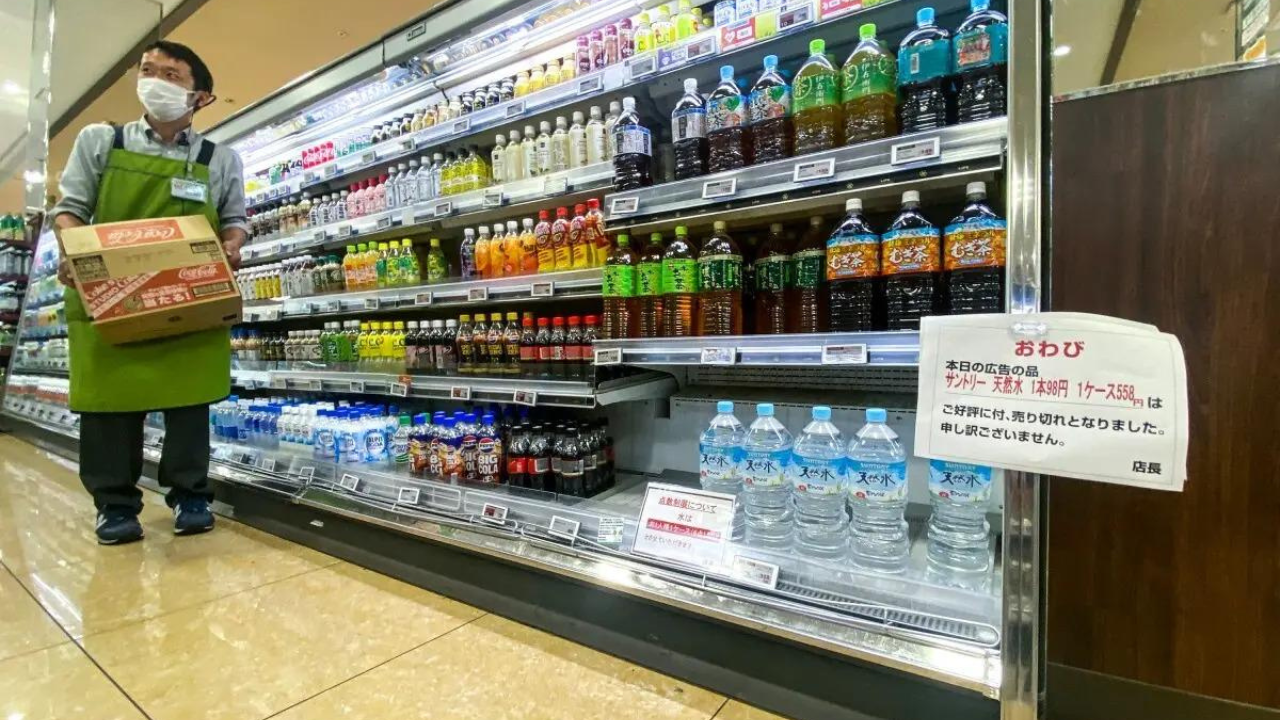Tokyo residents on Saturday faced growing shortages of essential items as concerns over recent quake-related incidents led to a surge in demand.
The Japanese government urged the citizens to avoid panic and bulk buying products. As the news of the upcoming megaquake was released, a sudden demand for disaster kits and daily necessities spiked.
Japan’s earthquake scientists have issued a warning that the country should be prepared for a potential “megaquake” in the future, which could result in the loss of hundreds of thousands of lives.The warning was issued after a powerful 7.1-magnitude earthquake that struck off Japan’s southern coast on Thursday.
A supermarket in the city posted a notice apologising for the shortage in supplies, explaining that “quake-related media reports” had triggered the shortages.
The sign also warned that bottled water was already being rationed due to “unstable” procurement, and hinted at potential sales restrictions for other products.
The rush for disaster preparedness was evident online as well. By Saturday morning, portable toilets, preserved food, and bottled water topped the list of most-purchased items on Japanese e-commerce giant Rakuten’s website.
Along the Pacific coastline, local media reported similar spikes in demand for disaster-related supplies, as people prepared for possible future emergencies.
Local media also reported that retailers along the Pacific coastline were experiencing high demand for similar disaster-related supplies.
The agriculture and fisheries ministry has urged the public to “refrain from excessively hoarding goods” in response to these concerns.
On Friday, a magnitude 5.3 tremor hit the Kanazawa region near Tokyo, triggering emergency alarms on mobile phones and briefly halting bullet train services.
The Japanese government has previously said that there is a roughly 70 per cent probability of a megaquake occurring along the Nankai Trough “subduction zone” within the next 30 years.
Earlier this year, on January 1, a 7.6-magnitude earthquake and powerful aftershocks struck the Noto Peninsula on the Sea of Japan coast, leading to the deaths of at least 318 people and causing significant damage to buildings and infrastructure.
The Japanese government urged the citizens to avoid panic and bulk buying products. As the news of the upcoming megaquake was released, a sudden demand for disaster kits and daily necessities spiked.
Japan’s earthquake scientists have issued a warning that the country should be prepared for a potential “megaquake” in the future, which could result in the loss of hundreds of thousands of lives.The warning was issued after a powerful 7.1-magnitude earthquake that struck off Japan’s southern coast on Thursday.
A supermarket in the city posted a notice apologising for the shortage in supplies, explaining that “quake-related media reports” had triggered the shortages.
The sign also warned that bottled water was already being rationed due to “unstable” procurement, and hinted at potential sales restrictions for other products.
The rush for disaster preparedness was evident online as well. By Saturday morning, portable toilets, preserved food, and bottled water topped the list of most-purchased items on Japanese e-commerce giant Rakuten’s website.
Along the Pacific coastline, local media reported similar spikes in demand for disaster-related supplies, as people prepared for possible future emergencies.
Local media also reported that retailers along the Pacific coastline were experiencing high demand for similar disaster-related supplies.
The agriculture and fisheries ministry has urged the public to “refrain from excessively hoarding goods” in response to these concerns.
On Friday, a magnitude 5.3 tremor hit the Kanazawa region near Tokyo, triggering emergency alarms on mobile phones and briefly halting bullet train services.
The Japanese government has previously said that there is a roughly 70 per cent probability of a megaquake occurring along the Nankai Trough “subduction zone” within the next 30 years.
Earlier this year, on January 1, a 7.6-magnitude earthquake and powerful aftershocks struck the Noto Peninsula on the Sea of Japan coast, leading to the deaths of at least 318 people and causing significant damage to buildings and infrastructure.
Source : Times of India






